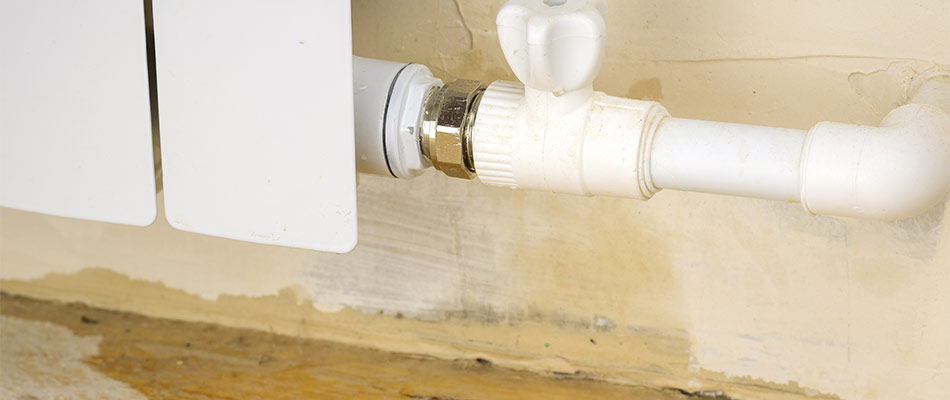6 Effective Methods to Spot Hidden Water Line Leaks Secretly
6 Effective Methods to Spot Hidden Water Line Leaks Secretly
Blog Article
The article author is making a few good observations relating to Finding hidden leaks overall in the article directly below.

Early discovery of leaking water lines can reduce a prospective calamity. Some little water leaks might not be noticeable.
1. Examine the Water Meter
Every home has a water meter. Inspecting it is a proven manner in which aids you discover leaks. For beginners, switch off all the water resources. Make certain no one will flush, use the faucet, shower, run the cleaning equipment or dishwasher. From there, go to the meter and also watch if it will certainly change. Because no one is utilizing it, there should be no movements. That indicates a fast-moving leakage if it moves. Similarly, if you find no changes, wait an hour or two as well as inspect back again. This indicates you might have a slow-moving leakage that can even be underground.
2. Examine Water Consumption
If you find sudden adjustments, in spite of your consumption being the same, it suggests that you have leaks in your plumbing system. A sudden spike in your costs suggests a fast-moving leakage.
A steady increase every month, even with the same habits, reveals you have a slow leakage that's also gradually rising. Call a plumber to thoroughly check your property, particularly if you really feel a warm location on your floor with piping below.
3. Do a Food Coloring Test
When it comes to water intake, 30% comes from toilets. If the shade in some way infiltrates your dish during that time without flushing, there's a leak between the container and dish.
4. Asses Exterior Lines
Don't fail to remember to examine your exterior water lines as well. Test faucets by connecting a garden hose. Needs to water permeate out of the connection, you have a loosened rubber gasket. Replace this and also ensure all links are limited. If you've got a lawn sprinkler, it will certainly aid get it professionally analyzed as well as kept yearly. One small leakage can waste tons of water and surge your water expense.
5. Examine as well as Examine the Scenario
House owners should make it a practice to inspect under the sink counters and also even inside cabinets for any bad odor or mold and mildew development. These two red flags indicate a leak so prompt attention is required. Doing routine evaluations, even bi-annually, can save you from a major trouble.
Examine for stainings as well as weakening as the majority of home appliances and pipelines have a life expectancy. If you believe leaking water lines in your plumbing system, do not wait for it to escalate.
Early detection of dripping water lines can reduce a prospective calamity. Some tiny water leakages might not be visible. Examining it is a surefire means that helps you find leaks. One small leakage can squander bunches of water as well as increase your water bill.
If you presume leaking water lines in your plumbing system, don't wait for it to escalate.
WARNING SIGNS OF WATER LEAKAGE BEHIND THE WALL
PERSISTENT MUSTY ODORS
As water slowly drips from a leaky pipe inside the wall, flooring and sheetrock stay damp and develop an odor similar to wet cardboard. It generates a musty smell that can help you find hidden leaks.
MOLD IN UNUSUAL AREAS
Mold usually grows in wet areas like kitchens, baths and laundry rooms. If you spot the stuff on walls or baseboards in other rooms of the house, it’s a good indicator of undetected water leaks.
STAINS THAT GROW
When mold thrives around a leaky pipe, it sometimes takes hold on the inside surface of the affected wall. A growing stain on otherwise clean sheetrock is often your sign of a hidden plumbing problem.
PEELING OR BUBBLING WALLPAPER / PAINT
This clue is easy to miss in rooms that don’t get much use. When you see wallpaper separating along seams or paint bubbling or flaking off the wall, blame sheetrock that stays wet because of an undetected leak.
BUCKLED CEILINGS AND STAINED FLOORS
If ceilings or floors in bathrooms, kitchens or laundry areas develop structural problems, don’t rule out constant damp inside the walls. Wet sheetrock can affect adjacent framing, flooring and ceilings.
https://www.servicemasterbyzaba.com/blog/how-to-detect-water-leakage-in-walls/
.jpg)
I ran across that write up about Top leak detection hacks when doing a lookup on the search engines. If you appreciated our blog entry kindly remember to share it. I love reading our article about Detecting hidden plumbing leaks.
Top service, dial! Report this page